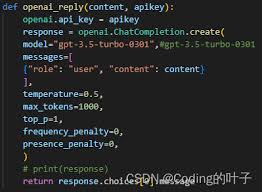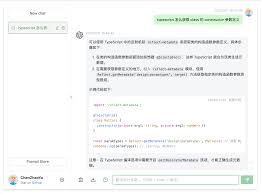Comprehensive Guide to Using GPT API with Python: Examples and Tips for Beginners
Ever heard about the magic of GPT API and wondering how to harness its power using Python? You’re in the right place! This guide is tailor-made for beginners eager to dive into the world of AI and leverage the GPT API seamlessly with Python. Let’s delve into the essentials and make the complex sound like child’s play.
Why Should You Care About GPT API?
The GPT API by OpenAI is a revolutionary tool that allows you to generate human-like texts. Whether you’re looking to build chatbots, automate content creation, or perform advanced data analysis, the GPT API enhances your efficiency and creativity. Knowing how to utilize it with Python, a user-friendly and versatile programming language, expands your possibilities immensely.
What This Guide Covers
We’ll walk you through the basics: from setting up your environment, understanding key functions, to implementing real-world examples. By the end of this guide, you’ll be equipped with the knowledge to tackle various tasks using the GPT API and Python. Here’s what you can expect:
- Setting Up GPT API with Python
- Basic Examples to Get You Started
- Advanced Usage: Tips and Tricks
- Common Issues and Solutions

Setting Up GPT API with Python
First things first, you need to set up your environment to use the GPT API with Python. Follow these simple steps:
Step 1: Install OpenAI Python Library
Open your terminal and run:
pip install openaiStep 2: Obtain Your API Key
Head over to the OpenAI website and create an account. Once you’re logged in, navigate to the API Keys section and generate a new API key. Keep it handy, as you’ll need it shortly.

Step 3: Writing Your First Script
Let’s write a simple script to test the API connection:
import openai
openai.api_key = 'your-api-key-here'
response = openai.Completion.create(
model="text-davinci-003",
prompt="Tell me a joke.",
max_tokens=50
)
print(response.choices[0].text.strip())
Basic Examples to Get You Started
Now that your setup is complete, let’s explore some basic GPT API Python examples:
Example 1: Generating a Simple Response
This example demonstrates how to generate a simple response from a given prompt.
import openai
openai.api_key = 'your-api-key-here'
prompt_text = "What is the capital of France?"
response = openai.Completion.create(
model="text-davinci-003",
prompt=prompt_text,
max_tokens=10
)
print(response.choices[0].text.strip())

Example 2: Summarizing Text
Summarization can be a powerful tool for condensing information. Here’s how you can do it:
import openai
openai.api_key = 'your-api-key-here'
long_text = "OpenAI's GPT-4 is an advanced language model designed to generate human-like text. It's capable of understanding context, generating creative content, and even performing complex tasks such as coding and data analysis."
response = openai.Completion.create(
model="text-davinci-003",
prompt="Summarize the following text:\n\n" + long_text,
max_tokens=50
)
print(response.choices[0].text.strip())
Example 3: Conversational AI
Create a basic chatbot by using the following script:
import openai
openai.api_key = 'your-api-key-here'
messages = [
{"role": "system", "content": "You are a helpful assistant."},
{"role": "user", "content": "Hello! How can you assist me today?"}
]
response = openai.ChatCompletion.create(
model="gpt-3.5-turbo",
messages=messages
)
print(response.choices[0].message["content"].strip())
Advanced Usage: Tips and Tricks
Ready to level up? Here are some advanced tips and tricks to make the most out of GPT API in Python:
Fine-tuning Model Responses
You can guide the model to give more accurate responses by providing more context or tweaking the prompt. For instance:
prompt_text = "As a historian, explain the significance of the French Revolution."
response = openai.Completion.create(
model="text-davinci-003",
prompt=prompt_text,
max_tokens=100
)
print(response.choices[0].text.strip())
Handling Large Input Data
Break down large inputs into more manageable chunks to keep the responses concise and to the point. Use loops for continuous data processing:
import openai
openai.api_key = 'your-api-key-here'
# Assume large_input is a lengthy text that needs to be summarized in parts
large_input = "..."
chunk_size = 1000 # Example chunk size
chunks = [large_input[i:i+chunk_size] for i in range(0, len(large_input), chunk_size)]
summaries = []
for chunk in chunks:
response = openai.Completion.create(
model="text-davinci-003",
prompt="Summarize the following text:\n\n" + chunk,
max_tokens=50
)
summaries.append(response.choices[0].text.strip())
full_summary = ' '.join(summaries)
print(full_summary)
Using OpenAI’s Built-in Functions
Take advantage of built-in functions like chat completions and code completions:
import openai
openai.api_key = 'your-api-key-here'
messages = [
{"role": "system", "content": "You are a helpful coding assistant."},
{"role": "user", "content": "Write a Python function to check if a number is prime."}
]
response = openai.ChatCompletion.create(
model="gpt-3.5-turbo",
messages=messages
)
print(response.choices[0].message["content"].strip())
Common Issues and Solutions
API Key Errors
Ensure that your API key is correct and has the necessary permissions. If you encounter rate limits, consider upgrading your plan or optimizing your API calls to use fewer tokens.
Timeouts and Slow Responses
For large data or complex requests, it’s common to experience slow responses. Streamline your prompts and consider batching your requests to improve performance.
Accuracy of Responses
If the responses are not accurate, provide more context or specify the task more clearly. Fine-tuning your prompts can significantly improve the quality of responses.
FAQs about GPT API and Python
Q1: How do I get started with GPT API and Python?
Follow the steps outlined in this guide: install the OpenAI library, obtain your API key, and start with basic scripts.
Q2: Can I use the GPT API for free?
OpenAI offers a free tier with limited usage. Depending on your needs, you might eventually need a paid plan to handle more extensive use cases.
Q3: What are some real-world applications of GPT API?
Some applications include chatbots, automated content creation, language translation, and data analysis. The possibilities are broad and can be tailored to specific industries.
Q4: What should I do if I encounter an error with the API?
Consult the OpenAI documentation, check your code for mistakes, and ensure your API key is valid. The OpenAI community forums are also a helpful resource.
Q5: How do I improve the performance of my GPT API calls?
Optimize your prompts, reduce the number of tokens, and consider asynchronous processing or batching requests to minimize delays and costs.
Conclusion
The GPT API paired with Python is a dynamic duo capable of transforming the way you handle text generation, data analysis, and automation tasks. With this comprehensive guide, you now have the tools to get started, explore advanced usage, and troubleshoot common issues. The key is to experiment, refine your approach, and leverage the vast capabilities of the GPT API to suit your specific needs.
Ready to take the next step? Start by implementing the examples provided and gradually build more complex applications. Happy coding!

